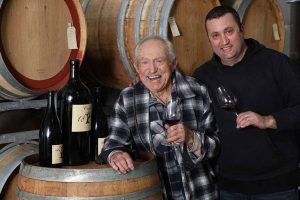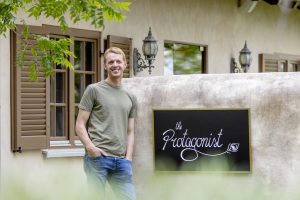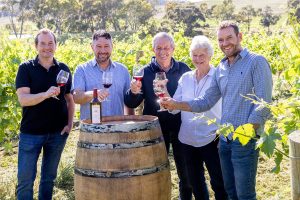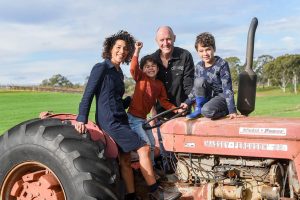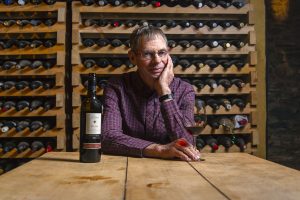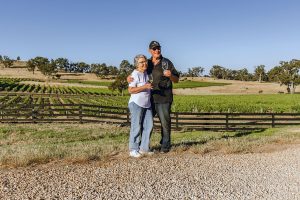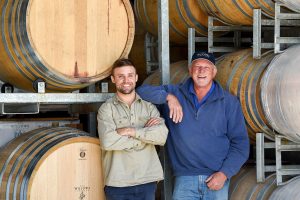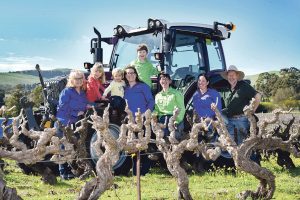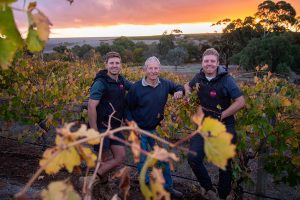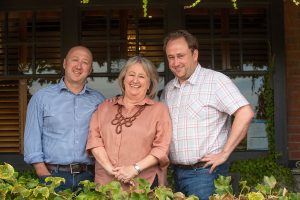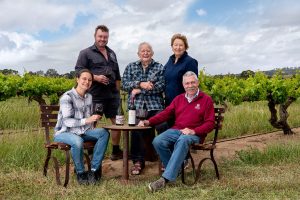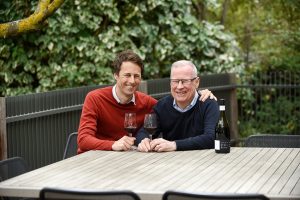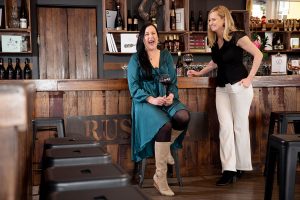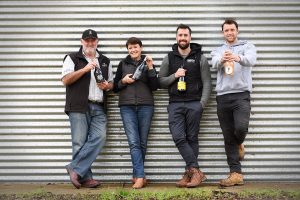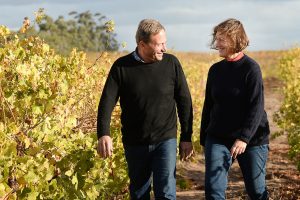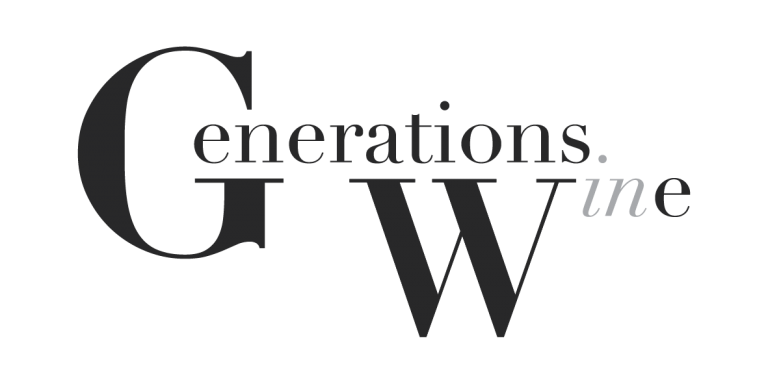
GENERATIONS IN WINE
Crafting tomorrow's classics
Old school knowledge meets new school navigation
WORDS & PHOTOgRAPHY Alicia Lüdi-Schutz

Charles Melton’s direction in life was decided with the toss of a coin.
Backpacking around Australia, he and his travelling buddy Ken Roach worked a vintage, picking grapes for Krondorf Winery, and when the company offered them two full time positions, one in the winery and one in the vineyard, fate sent Charles into winemaking.
Today, about to embark on his 51st vintage, he sits in the comfy corner of the Cellar Door that bears his name, not too far from where that lucky coin landed years ago.
Bouncing his eight-month-old grandson Max on his knee and delighting in the giggles of a second Barossa born generation, this little bundle of joy is the son of his winemaking daughter, Sophie and her partner Craig Underwood.
There’s a lot of love in the room as they share some quiet time before the busyness of vintage begins – Sophie focusing on whites, Charles on reds.
The two winemakers share the exact same passion for the premium wines they produce together under the Charles Melton Barossa label, despite their contrasting ways of learning the trade.
While Charles flipped a coin and learnt on the job, Sophie was born into the role, immersing herself in the family business from a young age, before excelling in her university studies and taking out the prestigious Gramp Hardy Smith Memorial Prize for top winemaking student along the way.
“Sophie is an improvement of the breed,” laughs Charles as he speaks of his “old school” winemaking journey and the Barossa legends, both past and present, who shared their knowledge so generously.
“I started at Krondorf when Jim Irvine was the boss. It had just been sold to Dalgety’s,” he says of his early career.
“Krondorf, Saltram’s and Stonyfell were the three wineries in the Dalgety group and Peter Lehmann was the senior winemaker of the group.”
Transferring to Saltram’s, Charles worked the 1976 vintage as a cellar hand before going into the lab.
“I started making a fortified wine in ‘79 and then PL offered me a job as full-time winemaker under Andrew Wigan and we were the two winemakers with Peter that built and started the new Peter Lehmann Winery back in ‘79-‘80.”

Meanwhile, Charles had fallen for a Barossa born girl named Virginia, whom he laughingly says made him a “local” by default after exchanging vows on their wedding day.
“She was a Weckert and her family arrived in 1858 – I got the longevity and history through marriage!”
Charles and Virginia always wanted their own winery one day, and Charles was open about his plans with his boss who encouraged his young protégé.
“We were making Peter Lehmann Semillon Sauternes, a progressive and famous wine back then, and I told him I would be making Botrytis affected sweet wines. Somehow, though, I finally worked out that wasn’t such a great idea!
“We made our first vintage under our own name in 1984 and I kept working for PL until 1986, the year we got our license to sell our first two vintages.”
Charles and Virginia purchased their Krondorf vineyard from Dick Modistach, where they built their Cellar Door and winery.
“A good old German name, he used to sell his grapes to Orlando. It was only 12 acres of vineyard at that stage,” he says.
“Back in the day, all this old bush Grenache, which is now 80 years old, went through here but we pulled some out to make way for this building.
“Then we bought Mick Schrapel’s old block below, and the block above us, which was Glastonbury’s – the old Dallwitz family property.”
Today they have 80 acres of vineyard, including those surrounding the upgraded winery and barrel shed they built in 2010; the Melton family’s home block at Lyndoch and one at Clare that Virginia’s father planted, aptly named, “The Father-in-Law Block”.
“Then we bought the old Koch homestead on the corner of Rowland Flat and Trial Hill Road in 2016,” adds Charles, describing the almost 100-year-old Grenache vines growing there.
With Sophie joining the winery and having a love for Riesling, a further 70 acres of land at High Eden has been added to the land tally.
“It will be covered in vines one day, that’ll be up to Sophie.”


“My first job was raking the bins into the crusher and getting the juice out when I was about 12. I don’t know, I just really enjoyed it and as I got older, there was nothing else I could see myself doing”
- sophie underwood
Stepping into the family business last year, Sophie spent six years honing her skills at Thorn-Clarke Wines after working a vintage at Peter Lehmann’s – her dad’s old stomping grounds.
“I heard a few stories, a few I blocked my ears for!” Sophie says with a cheeky smile.
She is fiercely proud to be following in her father’s footsteps, the internationally acclaimed winemaker whose flagship wine “Nine Popes” is credited by top wine writers for starting the Grenache revival.
The iconic wine’s name was inspired by the vineyards of Châteauneuf-du-Pape, planted by the papacy in the 13th and 14th centuries, and was put on the label in a deliberate effort to educate Australians about Grenache.
“Neuf is ‘nine’, but in that context it means ‘castle of the new pope’, so it also means ‘new’,” explains Charles of the now iconic label.
“We had made such a good wine from the old bush vines here and thought, ‘how the hell do we get people to take it seriously?’, because in the 80s no one was making Grenache.
“Back then, we had to draw parallels with Europe to give people an understanding that Grenache around the world is considered a really serious variety.
“Then James Halliday gave us a big write up in The Australian back in 1989….that gave us a real kick start and the brand took off.”
Now selling to 10 countries and working alongside Sophie, Charles knows the winery is in good hands for the future, with whites joining the line-up thanks to her talents and fresh ideas.
“She’s been here right from when she was literally tiny. I’m lucky, she naturally fell into it,” Charles says.
“I’ll slowly step aside over the next few years. I’ll still be here, but she’ll be the main driver.”
And Sophie’s eager to get behind the wheel.
“I love being here in the winery, always have. My first job was raking the bins into the crusher and getting the juice out when I was about 12. I don’t know, I just really enjoyed it and as I got older, there was nothing else I could see myself doing,” she says.


“We have that great history of everyone who has gone before us, all those great winemakers, then the youth, so it’s a nice mix.”
- charles melton
With the succession plan firmly in place, Charlie sees a bright future.
“Sophie may, in five to 10 year(s), take things in a different direction, who knows? You can’t stay still. But not standing still doesn’t necessarily mean getting bigger to keep moving. You can move forward in different ways. The property up at High Eden, is a much cooler site, that will give us a different focus, a different style of fruit to work with. That’ll keep us evolving in terms of wine styles.”
Reflecting on his past half century of vintages, Charles has come to realise it’s the responsibility of his generation to inspire the next.
“The way I used to view Colin Gramp, Peter Lehmann, John Vickery and all those boys, those venerable old blokes, is probably where I sit – now I’m one of the ancients!” he says with a laugh.
He believes the Barossa is in a solid position thanks to its collegiate nature and strength in numbers.
“We have that great history of everyone who has gone before us, all those great winemakers, then the youth, so it’s a nice mix,” he says.
“Solid traditionalists like myself, Robert O’Callaghan, the Schrapel boys and a few others like that, and all the young troopers coming through, an innovative image of the Barossa.”
But if he could provide any advice for the next generation of winemakers like Sophie, it would be to fiercely safeguard the name Barossa, treasure its heritage vines and stay true to the style you believe in.
“When it comes to wine, everyone is a critic, there is no question about that,” he says.
“Have faith in what you are doing and defend your style. One decade you’ll be in fashion, the next you’ll be out. Just keep riding the cycle and don’t try and change it to something you don’t truly believe in.”






